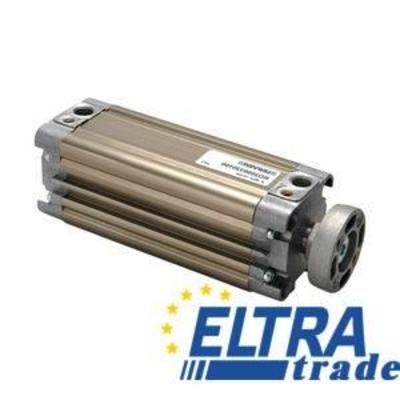Univer Pneumatic Octagonal Cylinder Univer RO
UNITOP Compact Cylinders octagonal tube. (Ø 16 .. 63 mm). NON-ROTATING. Chromium-plated steel female piston rod.
UNITOP Compact Cylinders octagonal tube. (Ø 16 .. 63 mm). NON-ROTATING. Chromium-plated steel female Through piston rod.
UNITOP compact cylinder with octogonal tube. Chromium-plated steel piston rod (female). Non-Rotating.
UNITOP compact cylinder with octogonal tube. Chromium-plated steel piston rod (female). Non-Rotating.
UNITOP compact cylinder with octogonal tube. Chromium-plated steel through piston rod (female). Non-Rotating.
UNITOP compact cylinder with octogonal tube. Chromium-plated steel through piston rod (male). Non-Rotating.
Unitop Compact Cylinders Univer RO with octagonal piston rod.
Full range: Univer RO100, RO101, RO120, RO200, RO201, RO220.
Octagonal pneumatic cylinder is an engine that is driven by energy transmitted from compressed air, after which the device converts it into mechanical energy. The design consists of a prefabricated body in which a piston rod is installed.
Today we take a closer look at Univer octagonal cylinders RO.
What is an Univer Octagonal Cylinders RO?
Octagonal cylinders are the executive element of any modern pneumatic system. It is applied at a pressure of 1.5 - 10 bar and ensures the conversion of the energy of compressed gas or air into rotational or translational motion.
The body of the pneumatic cylinder is a sleeve, inside of which there is a piston fixed on the rod in such a way as to ensure its free translational movement. The sleeve is closed on both sides with special covers, and the piston divides the inner chamber into piston and rod chambers. If the working fluid is supplied to the first, then a forward stroke occurs, and if to the second, the reverse.
Cylinders Ø 16-63 mm have compact overall dimensions and comply with UNITOP recommendations. These cylinders are also available in a non-rotating version and with an extended piston. The RO-series cylinders are equipped with adjustable pneumatic damping, which allows a significant increase in speed and a significant reduction in noise.
Octagonal Cylinders RO working principle
Compressed air from a compressor or other source is supplied to the piston cavity of the octagonal cylinders RO, the rod cavity at this moment is connected to the atmosphere using a distributor, the pressure of compressed air acts on the piston, causing it to move until it rests against the front cover. The pneumatic cylinder makes a straight stroke, its rod extends.
To carry out the reverse stroke, it is necessary to supply compressed air to the rod end, and the piston end to be connected to the atmosphere. Under the action of compressed air pressure, the piston will move, the rod will move.
The direction of compressed air flows into the piston and rod cavities, as well as their connection with the atmosphere or the discharge line, is carried out using special devices - pneumatic distributors.
Technical Data About Octagonal Cylinders RO from Univer
And now let's take a closer look at the technical characteristics of octagonal cylinders RO from Univer:
- Barrel in extruded aluminum alloy, externally and internally anodized 15 µm, plain profile, for flush-mounted sensors.
- Die-cast end-caps in zamac (Ø 16 ÷ 25 mm); in aluminum alloy (Ø 32 ÷ 63 mm).
- Self-tapping screws in zinc-plated steel.
- Chromium-plated steel rod.
- Stainless steel rod.
- Piston in aluminum.
- Acetal resin slide.
- Piston seals in nitrile rubber.
- Rod seals in polyurethane.
- Piston in aluminum D.A.
- Extended piston D.A. for supporting a higher radial load (Ø 32 ÷ 63 mm).
- Adjustable pneumatic cushioning for efficient deceleration of the piston and reduced noise level.
- Cushioning length 8 mm (Ø 16 ÷ 25 mm); 10 mm (Ø 32 ÷ 63 mm).
If you need more detailed information about pneumatic cylinders, you can always contact our manager, as Eltra Trade are one of the certified Univer octagonal distributors.
